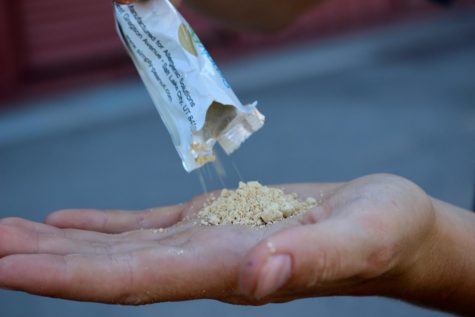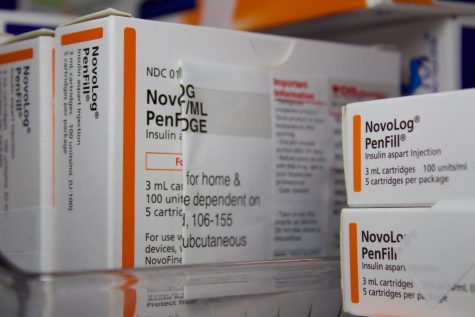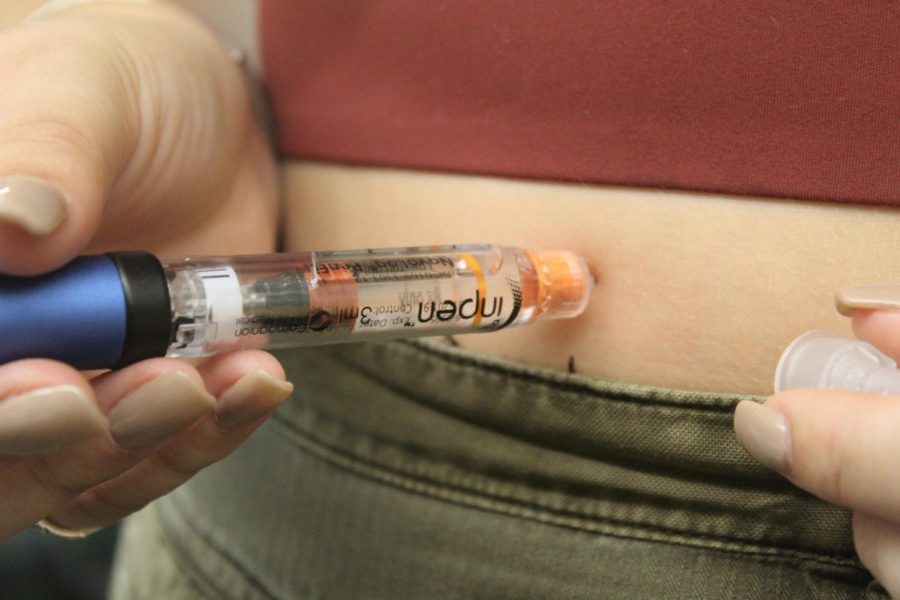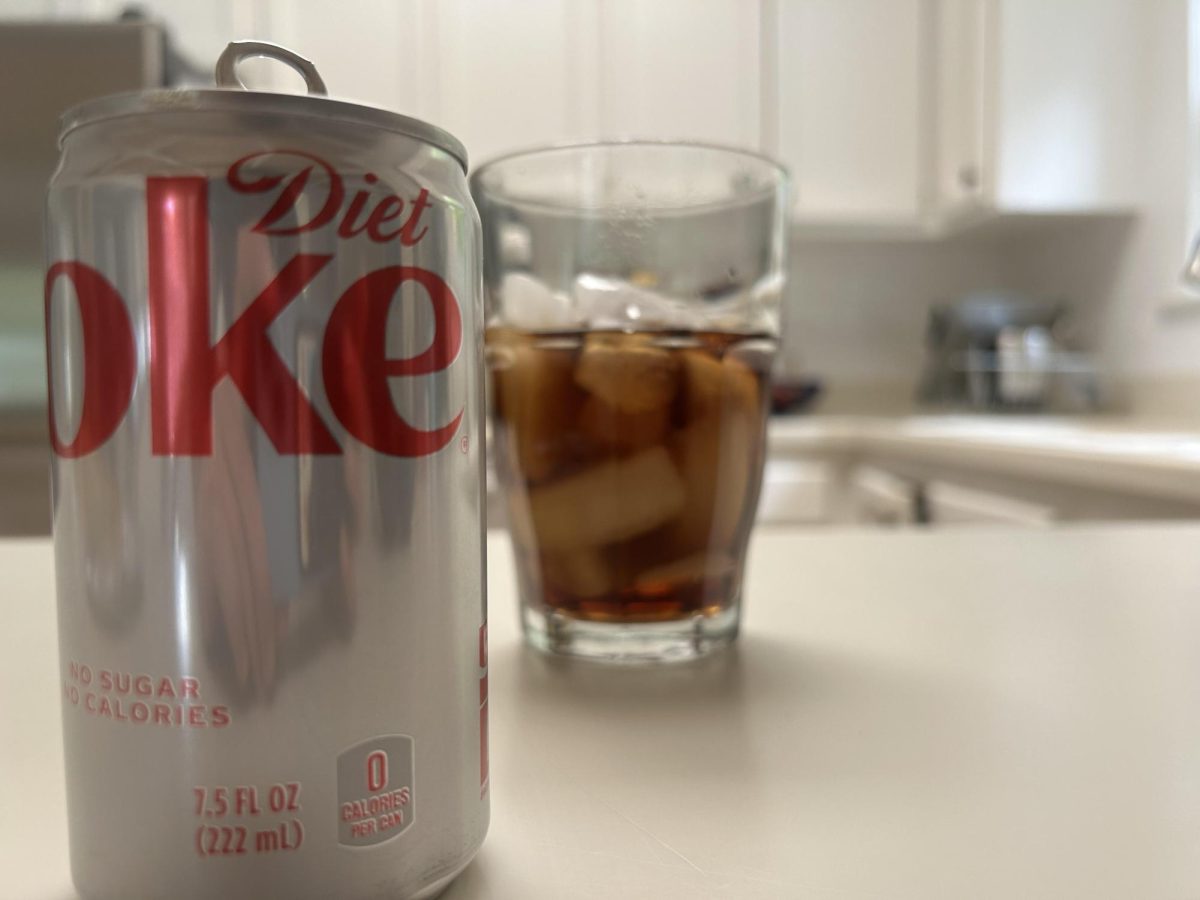Allergies, diabetes and affordability
While most Americans have the privilege of ignoring the jumble of characters scattered across a nutrition label, many are not as fortunate. Some must triple-check with servers at dinner to assure their meal does not contain allergens that could send them to the hospital. Others must closely monitor their blood sugar levels with every bite or excuse themselves from the table for routine insulin injections. Alongside the numerous obstacles people with severe allergies and diabetes face, there is yet another problem: affordability.
EpiPens: the costs of current solutions
Dana Damara, a mother of two former Redwood students who has moved her family to San Diego, has faced a multitude of fiscal and emotional issues as a result of purchasing medications for her daughter, Ava Layon.

Layon struggles with common nut allergies, as do one in every 13 children in the U.S., according to Food Allergy Research & Education. As a precaution, she always carries her epinephrine auto-injector, EpiPen, produced by the pharmaceutical company Mylan. EpiPens can save patients from life-threatening anaphylaxis by delaying allergic reactions, but the medication is not cheap. Furthermore, many insurance companies fail to minimize the high cost.
“I [have] to pay for all of it out of pocket…because insurance [won’t] cover it,” Damara said. “I have to go to the [EpiPen] website and get a coupon, and I’ve been able to get it for about $300. I have to replace it every year [for her] and her [high school], because it’s required by law.”
Though patients with severe allergies are advised to avoid their allergens, they can still unintentionally be exposed; products like EpiPen are prescribed to combat anaphylaxis in these circumstances. The devices are only life-saving if used within certain windows of time, however, and Mylan suggests one should use an injector immediately if experiencing a reaction. After one use, the EpiPen must be replaced. Currently, a two-pack of single-use EpiPens costs around $650 to $700, a markup of over 500 percent of generic brands, according to CVS Pharmacy. However, other versions of epinephrine dispensers are available for significantly less.
“Patients can purchase the authorized generic for Adrenaclick at the low cost cash price of $109.99 for a two-pack. This authorized generic [injector] is a Food and Drug Administration (FDA)-approved device with the same active ingredient as other epinephrine auto-injector devices,” CVS wrote on an informational webpage for the product.
Before generic versions of the drug reached the market, EpiPen headed the industry as the leading and most expensive epinephrine-distributor in the U.S. According to Annals of Internal Medicine, an academic journal of the American College of Physicians, Mylan’s heavy marketing has brought increases in demand for the device. The company has raised the medication’s cost more than five-fold since 2005, states Annals of Internal Medicine.
The epinephrine injector market is continually growing. The Center for Disease Control and Prevention states the prevalence of food allergies among American children increased roughly 50 percent between 1997 and 2011. In 2013, families paid an average of $25 billion annually to care for children with food allergies due to the costs of hospitalizations and injector purchases, according to the Journal of the American Medical Association (JAMA). Additionally, customers are driven to replace the injectors frequently due to EpiPen’s brief shelf life of 18 months.
Desensitization: new advancements
Despite inflated prices of name-brand products, other companies within the medical community, such as Aimmune Therapeutics, have made positive developments regarding food allergy suppression within recent years. Desensitization, a process through which people with allergies are routinely exposed to gradually increasing amounts of their allergen to decrease symptoms, has become increasingly popular. Through the controlled exposure to allergens, patients can build a tolerance to specific sources of allergic reactions, limiting symptom severity and in some cases reducing the possibility of reaction. In recent years, the desensitization process has branched into an effective immunotherapy process for patients allergic to peanuts, one of the top eight allergens in the U.S. that many do not grow out of, stated Healthline in 2017.
Freshman Will Hartung has dealt with a peanut allergy since early childhood. Two months ago, Hartung began the desensitization process, dubbed oral immunotherapy. According to Hartung, the cost without insurance of his desensitization process is about $2,000, which includes the costs of appointment visits with his allergist. Though it may seem like a costly procedure at first glance, this price is quickly matched by the cost of regularly purchasing new EpiPens. Additionally, while EpiPens require continuous re-stocking, the desensitization process could be a lifelong solution.
Hartung claims he is a guinea pig for the peanut desensitization process within his age group in Marin.
“[My doctor] has really only done it the way they are doing it on kids under the age of five, so I’m their first older kid,” Hartung said. “I wasn’t really scared while starting the new process; I’m just kind of excited because I have never had a Reese’s Peanut Butter Cup or frozen Snickers or anything of that sort, so it’s more like anticipation instead of fear.”

Though immunotherapy could grant hope of reduced risk to many, the treatment does not guarantee a cure. According to the American Association for the Advancement of Science, the treatment is offered by about 200 U.S. allergists, but hundreds more await FDA’s approval of Palforzia, produced by Aimmune Therapeutics. A uniform peanut capsule rather than a powder, Palforzia is designed to help increase tolerance to peanuts for patients ages four to 17, states NPR. The FDA’s advisory committee endorsed the effectiveness of the new capsule this past September, which points to a probable approval from the FDA in the near future.
As FDA internal discussion continues, doctors are implementing unique allergy processes in their private practices. Local allergist Dr. Schuman Tam prescribes this desensitization therapy from his office, Asthma & Allergy Clinic of Larkspur & San Francisco. Tam sees the process as encouraging for his younger demographics.
“People have been doing desensitization for the past five years. There was concern before because this was a different protocol…but this method [is] much more believable to me. It seems to be safe, [because] precaution is implemented, and that seems to work,” Tam said. “So far though, we can only say [desensitization] is very effective in inducing tolerance.”
High costs across the board: the impact of the insulin spike
Despite promising progressions, inflated costs of corresponding medications continue to cripple communities in need of life-saving medications. The costs of name-brand diabetic treatment options parallel EpiPen’s unaffordable price points for their own products. Insulin is included on the World Health Organization’s Model List of Essential Medicines, according to JAMA. Despite—or possibly due to—the products’ necessity, insulin prices have increased threefold over the past decade, while out-of-pocket costs per prescription have doubled, as reported by JAMA.
Between 2012 and 2016, the cost of all insulin products increased, nearly doubling point-of-sale prices, according to Health Care Cost Institute.
Redwood graduate Brendon Wright can attest to this trend in swelling prices. A Type 1 diabetic since age 13, Wright compensates for his inability to produce insulin through regular injections or pumps (both are methods of transferring the hormone).
“Last winter, my dad switched jobs, so we got a new insurance through [his] company. After the insurance switch, the next time I went to go buy insulin at the pharmacy, I ended up having to pay a $50 copay, which I previously had not had to [do] before,” Wright said. “This was new and was because of the insurance [switch] and rising costs—it’s kind of crazy.”

These inflated insulin prices have inhibited use for people whose survival depends on it. A 2019 JAMA study found that cost-related insulin underuse was present in one in four patients at an urban diabetes center. Such high nonadherence rates stress the matter of affordability of the vital hormone.
T1International, a nonprofit organization raising awareness and providing aid to Type 1 diabetics globally, published a study that found rising costs also contribute to insulin rationing. The organization reported that over 25 percent of participating Type 1 diabetics limited use of insulin in 2018, revealing a trend that is not only risky, but deadly if diabetic ketoacidosis (a serious diabetic condition with escalating symptoms) is induced.
Rationing is not an ideal method for anyone when it comes to administering insulin. Therefore, additional methods have been explored by diabetics, such as internationally obtaining the hormone. In July of 2019, Bernie Sanders took a group of twelve diabetics to Canada from Detroit by bus. After the 17 hour journey, Sanders led the group to a Canadian Pharmacy where diabetics were allowed to purchase insulin. Globally, insulin is typically sold at much cheaper and affordable prices; the U.S. is one of the only countries to inflate the medication’s cost.
“By buying insulin in Canada, everyone had saved a lot of money. A vial that one woman said could set her back $340 in the United States had cost her about a tenth of that,” Sydney Ember of The New York Times stated.
Redwood student “Amanda,” who has requested to remain anonymous, is aware of the adverse effects of insulin’s costliness. A Type 1 diabetic for years, Amanda finds the prices of frequently-used insulin excessive.
“Insulin is insanely expensive, and it is not like we need insulin just because of our eating…[we] need insulin to survive. It is critical—it’s a human right—to have. If you run out of [insulin], you can die,” Amanda said.
Amanda and her family recognize the inevitable frustrations that come with re-stocking insulin, and have gone beyond the limitations of just treating Amanda.
“My mom has great [health] insurance from her job, but basically in every situation, [insurance] does not cover the full price of insulin. If we did not have insurance, we would be paying thousands a month just for insulin. We purposefully get more of it than I need, so we have excess in our fridge not only for emergencies for me, but to donate to those whose insurance does not cover the whole price,” Amanda said. “Recently, we just donated to this mother… and her daughter is around three [years old]. She has been inundated by the cost of insulin, and when we gave it to her, she just broke down crying.”
The redistribution of insulin is illegal under federal laws, regardless of whether the hormone is donated or sold. Many diabetics risk being caught, yet the tradeoff is necessary for many hoping to aid those overwhelmed by insulin’s cost.
The role insulin can play in saving one’s life is synonymous to the significance epinephrine holds for anaphylactic people. The range of repercussions these medical costs create are alarming to many, and Wright fears this swelling issue will only worsen with time.
“I get worried that with rising prices of medication[s], it is becoming increasingly common for people to make lifestyle decisions purely based on their ability [to] afford their medication or not,” Wright said.













